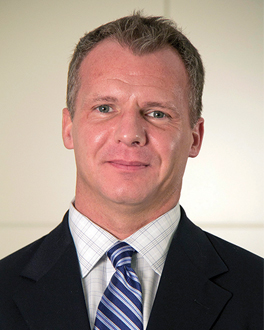Be Prepared for the Shift to Population Health
11/1/2022
Population Health Management
 Under traditional care arrangements, health care providers are reimbursed for the services provided. It is a patient by patient, treatment-based, reactive approach. For example, skilled nursing facilities are responsible for single-benefit, skilled care under Medicare part A. This is a specific situation where care and therapies are all aimed at rehabilitating the patient to levels of function prior to surgery, an accident, etc.
Under traditional care arrangements, health care providers are reimbursed for the services provided. It is a patient by patient, treatment-based, reactive approach. For example, skilled nursing facilities are responsible for single-benefit, skilled care under Medicare part A. This is a specific situation where care and therapies are all aimed at rehabilitating the patient to levels of function prior to surgery, an accident, etc.
On the other hand, population health management (PHM) is a data-driven, holistic approach to care delivery and patient outcomes of a group of individuals, whether that cohort be defined based on the setting (i.e., nursing facility or assisted living) or chronic condition (i.e., dementia, COPD, etc.) or other feature. This “managed” care model means that everything from doctor visits to medication to specialty services—and the interactions between them—is governed from a proactive, preventative, and coordinated standpoint. This type of value-based care model rewards operators that improve care and reduce costs. Residents in skilled nursing facilities and long term care facilities receive higher quality, more timely care and a better overall experience, and the government achieves its goal of reducing per capita cost.
Moving from Fee-for-Service to PHM
The Centers for Medicare & Medicaid Services (CMS) and states are heavily focused on moving from fee-for-service and payment by volume to value-based care and PHM models, thereby also driving health plans, health systems, and physicians groups down this path. Being able to understand and adopt population health approaches is critical if long term care providers want to move upstream in the health care reimbursement food chain. For example, Medicare Advantage in 33 states grew by double digits, and there are states where Medicare fee-for-service is irrelevant. Over the last 20 years, the over-65 population has gradually migrated to managed care.
Adopting a PHM model benefits facilities by capturing more dollars for care, being efficient with those dollars to achieve high-quality outcomes, and allowing a range of risks for costs. There providers can have their own plan or partner on shared savings or other value-based reimbursement arrangements.
AHCA/NCAL’s Population Health Summit
A key step is understanding the PHM options and potential paths to engagement. AHCA/NCAL’s Population Health Summit will be held on December 7-8, 2022, at the Gaylord National Harbor in Maryland and offers long term care providers further exploration, solutions, and opportunities in PHM. This summit will equip providers with the first steps to move away from the fee-for-service environment and into managing the whole person.
The summit features sessions for providers just entering the space, those well into the space, and those looking to create local and regional relationships. Networking is vital because the regional nature of PHM models relies upon a variety of plan owners, provider networks, and even part owners. Additionally, it is an opportunity for providers to share best practices of managed care to improve quality care and the overall experience for residents. There will be sessions specifically for independent owners and assisted living operators as well.
There will be education on all levels of risk, from launching an institutional special needs plan, being involved in sub-capitation payment plans, or joining a preferred provider contract with an accountable care organization. This will allow attendees to find the right path at the right time for them to take on risk bearing and PHM approaches.
Dr. Mark McClellan, a former CMS administrator, will deliver the opening keynote. His research at Duke University’s Margolis School for Public Health about PHM models has been forward thinking and innovative. The closing keynote will be the deputy director for the Centers for Medicare & Medicaid Innovation, Ellen Lukens, talking about the innovation center’s vision for acute and long term care providers in their approaches to moving away from fee-for-service and to paying for value of care.
Don’t Be Left Behind
Traditional fee-for-service is largely going to be gone by 2030, replaced by a system that holds providers accountable through partial and total cost of care models for quality and outcomes. If you’ve not started to think through how you will function either as a meaningfully engaged partner in a value-based reimbursement environment or a risk-bearing entity, you’re going to be at a very serious disadvantage.
Mike Cheek is senior vice president for reimbursement and market strategy at AHCA/NCAL. Cheek and the reimbursement team work on traditional Medicare and Medicaid issues as well as with members to move into new, innovative PHM approaches.